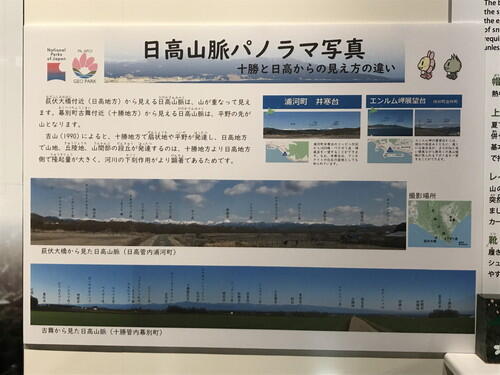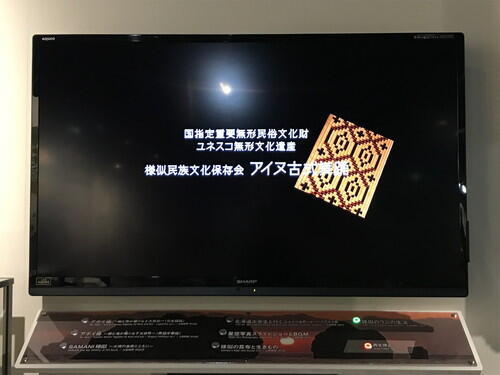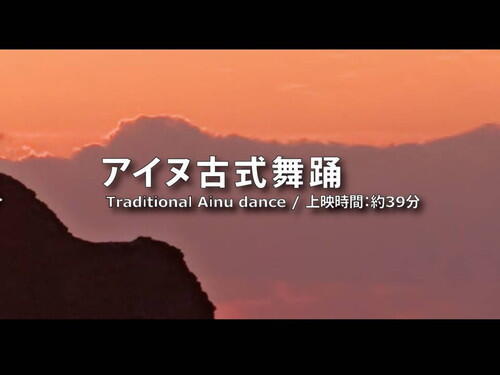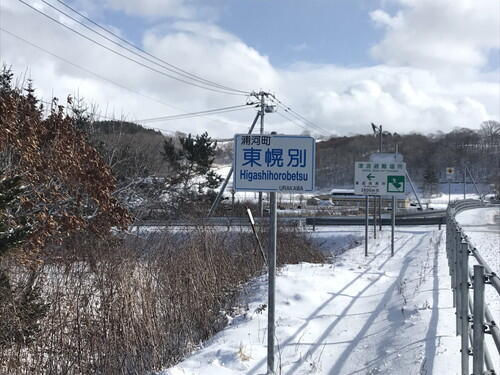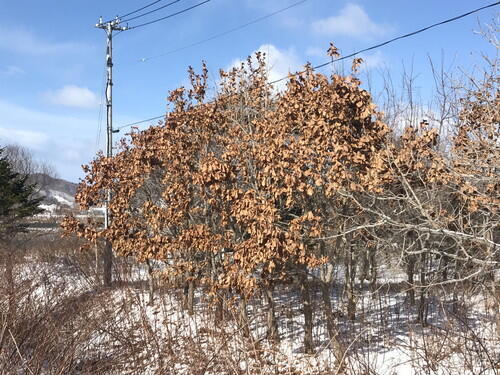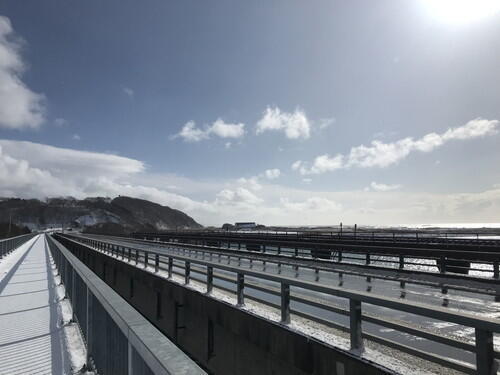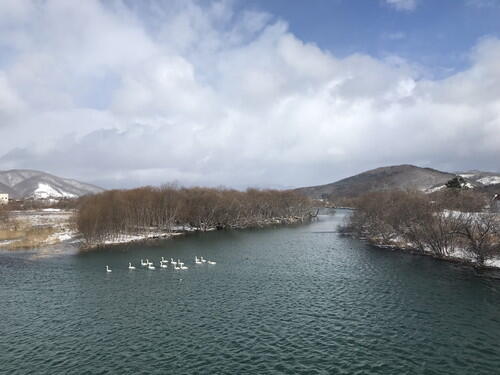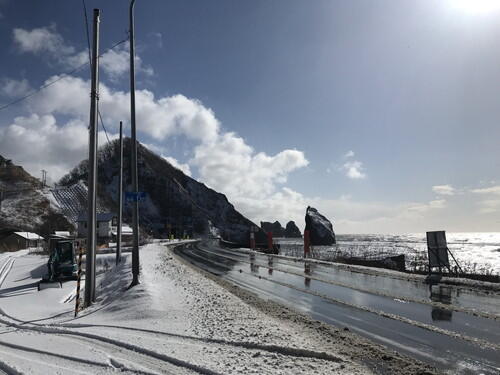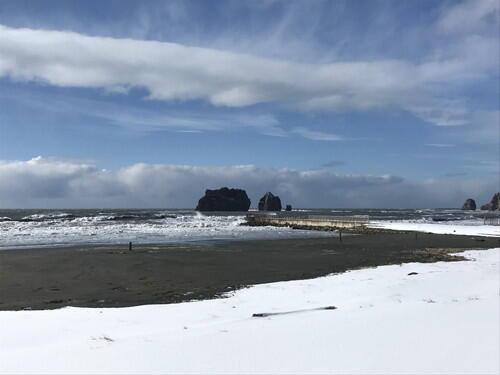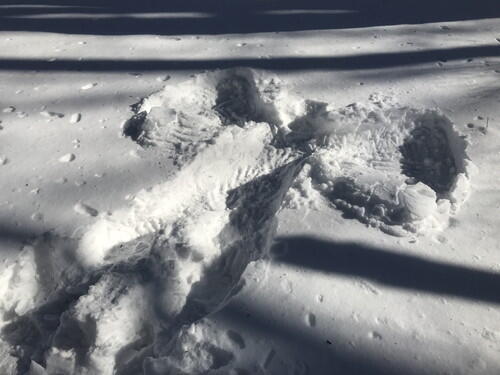Blog
2025.02.22
Hidaka Mountains Exhibit Panel
Recently, we created a new exhibit panel that introduces the Hidaka Mountains. The exhibit compares two photos, one from the Tokachi side and one from the Hidaka side.
The Mt. Apoi Geopark is planning to hold a pre-tour around the Hidaka Mountains prior to the Japanese National Geopark Conference in Tokachidake Geopark in September 2025. I think the tour would be more enjoyable after viewing this exhibit.
Additionally, since the area was designated as a national park in 2024, we wanted to create a related exhibit so visitors could enjoy the mountains by climbing and just by viewing their surroundings. This photo was previously on display at the Visitor Center, but we moved it to a more prominent location and made one large panel.
These photos were provided to the Visitor Center.
2025.02.12
Mt. Apoi Visitor Center Video Display
We have replaced part of the video display at the Mt. Apoi Geopark Visitor Center with an Ainu traditional dance performance that was performed by the Samani Indigenous Culture Preservation Society in 2024.
- Video title: National Intangible Folk Cultural Property, UNESCO Intangible Cultural Heritage "Samani Indigenous Culture Preservation Society: Ainu Traditional Dance"
- Running time: 39 minutes
Previously we had to swap out the DVDs to change the video display, but we've upgraded it so now all you have to do is press a button.
2025.02.06
Winter at Urakawa's Horobetsu River
I recently visited the Horobetsu River in neighboring Urakawa Town, so here is a report of what it looks like in winter.
Higashihorobetsu, Urakawa
Speaking of winter along the Hidaka coastline, the daimyo oak retains its leaves.
The Horobetsu River is crossed by three bridges: a pedestrian walkway, a road, and a railroad bridge.
There were swans in the Horobetsu River. The Hidaka Mountains were wrapped in clouds.
Either a tufted duck or a common goldeneye duck is diving into the water in front of the swans.
Samani Shiogama Tunnel
Oyako-iwa (Parent & Child Rocks)
2025.02.04
Meeting for 15th Japanese Geopark National Conference in Tokachidake
This year's 15th Japanese Geopark National Conference in Tokachidake (Biei/Kamifurano) will be held in September 2025. Mt. Apoi Geopark is also holding a pre-conference tour.
On Tuesday, Feb 4th, I went to Biei Town for the initial executive committee meeting for the national conference, and the 3rd Hokkaido Geoparks Administration meeting. There was only one issue, it had been snowing heavily around the meeting date. Just last night 120 cm of snow fell in Obihiro and 70cm in Shikaoi Town. I ended up taking a roundabout route due to various road closures: Samani - Hidaka Town - Shimukappu Village - Biei. Along this route, Furano had the most snowfall. 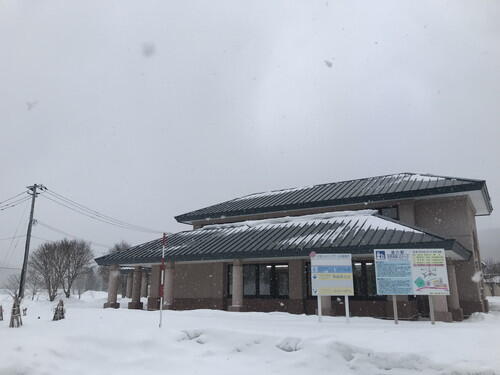
Several trucks were parked on the side of the road in Shimukappu Village since the road to Tokachi was closed. 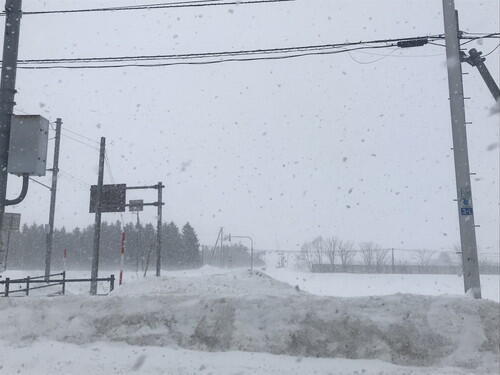
I experienced blizzard-like conditions near Gakuda Station in Furano. 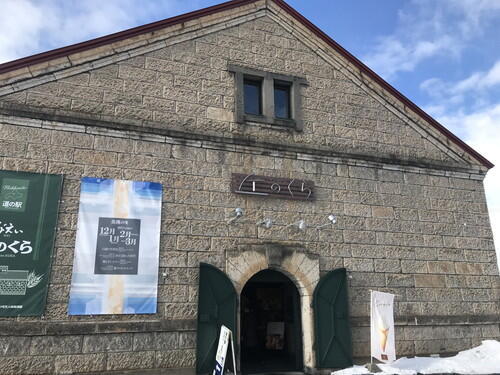
Biei has many quaint stone buildings. There were many tourists from South Korea and China as well. 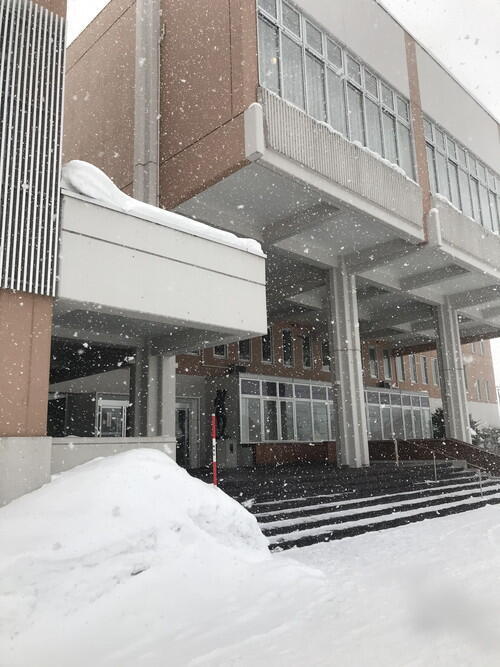
It was sunny but starting to snow as I reached the entrance to the meeting venue. 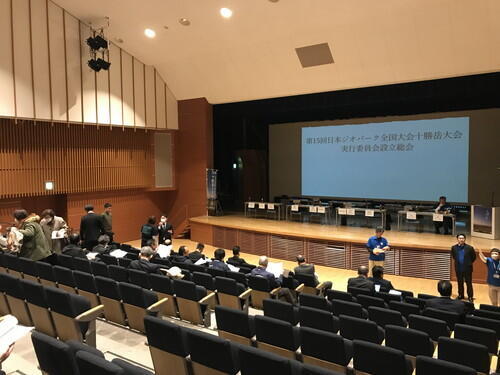
The general meeting to establish the executive committee.
2025.01.24
Kan x Kan Lectures "Warm Wind Cave at Mt. Kannon"
On January 18th we held the latest Kan x Kan Lecture to find the warm wind cave at Mt. Kannon. It had snowed the day before, so it was easy to see where the wind cave was because it was the only spot where the snow had melted. You could also feel the temperature difference of the warm air flowing through the cave.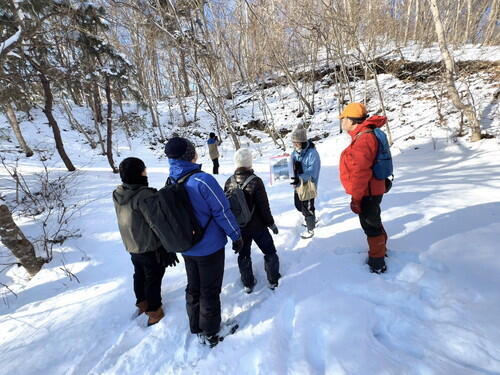
As we headed towards the wind cave, we talked about the Mt. Kannon Cherry Blossom Festival.
I had also found a book at the library that introduced wind caves in Shimonita and the Naeba foothills on Japan's main island of Honshu that are utilized for silkworm production. 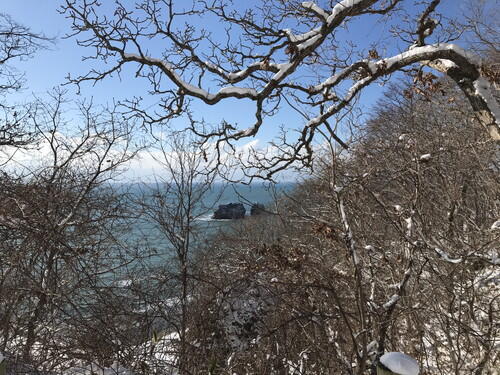
We could see Oyako-iwa (Parent & Child Rocks) from Mt. Kannon.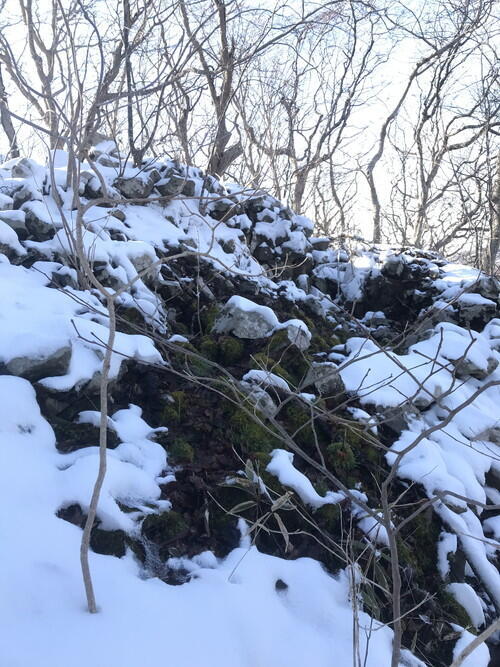
The snow was melted only around the wind cave. The air was warm to the touch and the thermometer said the wind was 9C (even though the outside air was in the negative numbers).
A curator from the Samani Folk Museum also talked about insects that can be found around wind caves. 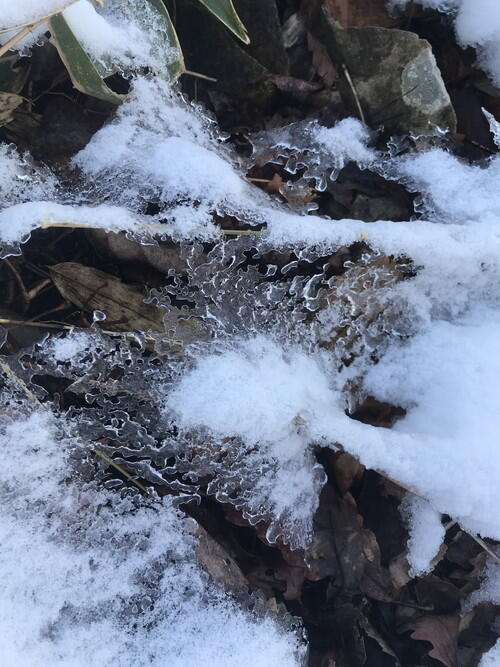
Melted snow around the wind cave.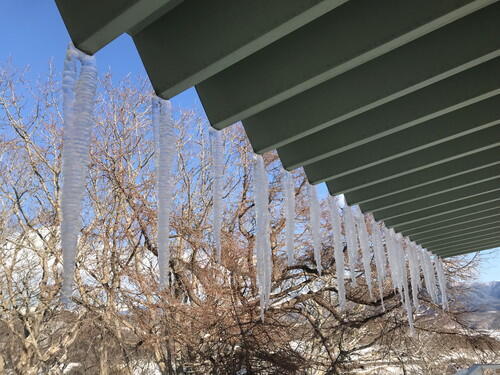
We also stopped by the observation deck. The icicles were so long, it makes you want to grab one.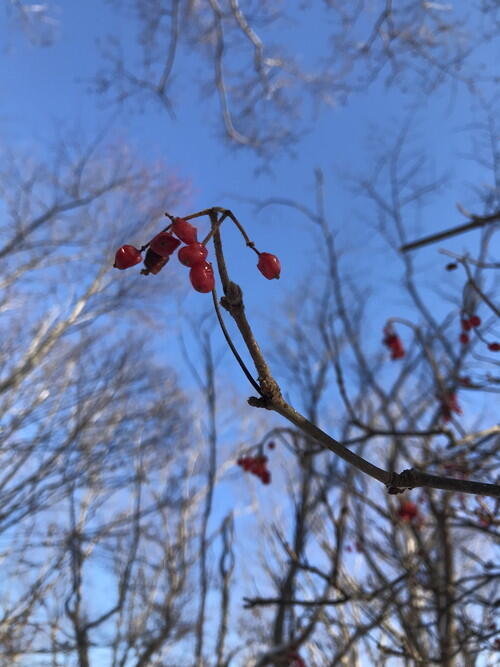
The red Wright viburnum berries really stood out. I also heard the call of a great spotted woodpecker.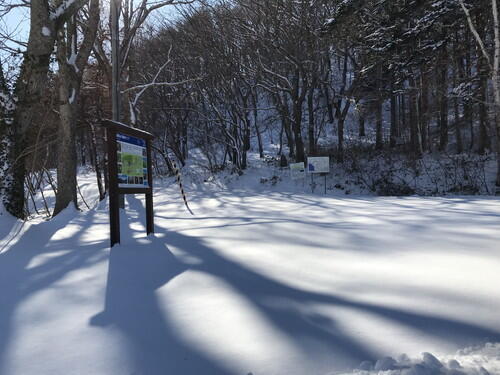
I created a path in the snow for safety purposes. Here is the before photo...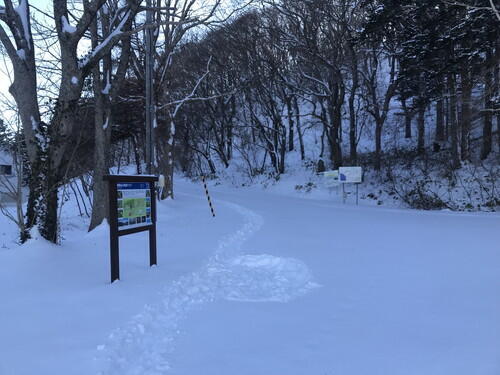
I was so exhilarated after finishing the path in the snow, that I decided to make a snow angel as well.




